blockchain games
HashCats prepares for Token Generation Event after completing mining season
Published
5 months agoon
By
admin

HashCats, a tap-to-earn miner game, is concluding its first season and shifting focus to its upcoming Token Generation Event.
With nearly five million players engaged in the game’s first six months, HashCats has announced a $500,000 giveaway in collaboration with its partner Choise.ai to reward players ahead of this next phase, according to a release shared with crypto.news.
T2E games, which allow users to earn cryptocurrency by playing, have gained attention but faced challenges in maintaining long-term engagement. Games like Hamster Kombat and Catizen (CATI) initially sparked hype but have struggled to sustain user interest.
HashCats is trying to buck this trend by expanding its ecosystem and enhancing player incentives.
HashCats background
Tap-to-earn games let users generate cryptocurrency by playing simple games. In HashCats, players mine $HASH tokens by tapping their screens and upgrading virtual mining equipment. These tokens can then be converted into cryptocurrency or used within the game’s ecosystem.
Unlike traditional games that charge for upgrades, T2E games aim to provide a potential income stream for players.
Season 1 of HashCats introduced basic mining mechanics, enabling players to use a single virtual ASIC miner designed for mining specific digital currencies based on their hashing algorithms.
According to the release, Season 2 will expand this concept, enabling players to manage a full mining farm and introducing Secret Points, which boost TGE rewards. Players from Season 1 who accumulated SP through contests and giveaways will gain an advantage in the new phase.
HashCats and Choise.ai Collaboration
The partnership with Choise.ai, a platform that merges traditional finance with blockchain, adds an extra layer of incentives.
The ongoing $500,000 giveaway includes events like the “Wheel of Fortune” contest, where players can win CHO tokens. Choise.ai also plans to launch Visa and Mastercard options tailored for HashCats players.
Source link
You may like


Monero’s XMR Rockets 40% as XRP Leads Crypto Majors Gains
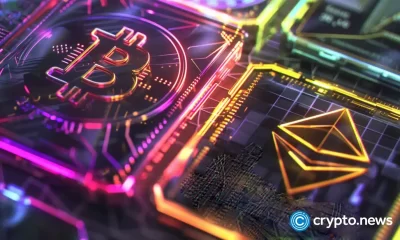

The 5 top crypto loan platforms of 2025


XRP Price Shows Strength — Breakout Above Key Levels Possible?


Expert Reveals Why The Ethereum-To-Bitcoin Ratio Is Falling


Analyst Says Solana-Based Memecoin Going Much Higher, Sees PENGU Facing ‘True Test’ After April Surge


Nike sued for $5 million over its shutdown of NFT platform RTFKT
blockchain games
Solana L2 Sonic includes TikTok users in airdrop
Published
4 months agoon
December 23, 2024By
admin

Solana GameFi network Sonic will airdrop free tokens to TikTok users for joining its crypto game.
Layer-2 gaming-centric Solana-native network Sonic plans to send SONIC tokens to TikTok users onboarded via its social media blockchain game. The Solana (SOL) Virtual Machine protocol designed its SonicX game directly on TikTok, similar to The Open Network developers behind Telegram mini-games.
The idea revolves around tapping existing web2 audiences for web3 projects, accessing millions of users already on platforms like Telegram and TikTok.
Over 1 billion monthly active users log on to TikTok, with numbers expected to reach more than 2 billion by 2029.
SonicX, the first TikTok App Layer from Sonic SVM, will distribute $SONIC tokens to all eligible TikTok users. Over 2 million users have already joined via a seamless onboarding flow—no external wallet setup or gas fees required.
Sonic on X
Social media-native games became widely popular on TON and Telegram. Projects like Notcoin (NOT) and Hamster Kombat (HMSTR) amassed millions of users in a few short months.
However, the trend appeared shortlived as protocols experienced a sharp drop in activity post-token airdrop. Hamster Kombat lost over 80% of its users right after its cryptocurrency distribution. Crypto giants like Binance and Gate have also released reports detailing a drop in Telegram mini app vitality.
Source link
Axie Infinity
Axie Infinity developer cuts 21% workforce: report
Published
5 months agoon
November 25, 2024By
admin

Axie Infinity creator Sky Mavis lays off 50 employees as part of broader efforts to adapt post-hack and market shifts.
Sky Mavis, the developer of the blockchain-based game Axie Infinity, said it will lay off 21% of its staff — or roughly 50 employees — as part of efforts to streamline operations and focus on core products, TechInAsia has learned.
The firm’s co-founder Nguyen Thanh Trung emphasized in an X post that the decision was not driven by financial pressures, reassuring that the decision is a “strategic move that allows for a sharper focus and positioning Sky Mavis for hypergrowth in 2025 and beyond.”
“The decision to part ways with talented team members was not made lightly and does not reflect their contributions to Sky Mavis. […] In order to better focus on these products and have the agility needed to open Ronin in Q1, we have made the tough decision to let go of 21% of our workforce.
Nguyen Thanh Trung
Trung also shared that Sky Mavis would not pursue new directions, stating, “rather than trying to build products for all users, we are doubling down on what makes Sky Mavis truly exceptional.” As a result, the game developer will focus on the Ronin wallet and expanding the Ronin Network “for more builders.” Following the news, the price of the Axie Infinity (AXS) token plunged 3.78%.
Founded in 2018, Sky Mavis operates a play-to-earn model where players purchase monsters as well as earn non-fungible tokens and in-game currency. In 2022, North Korea-affiliated hackers launched a multi-level social engineering attack on the company, leading to a $600 million loss. In response, Sky Mavis shifted to a free-to-play model.
Source link
blockchain games
Hamster Kombat Ended in a Mass Exodus of 260 Million Players
Published
6 months agoon
November 6, 2024By
admin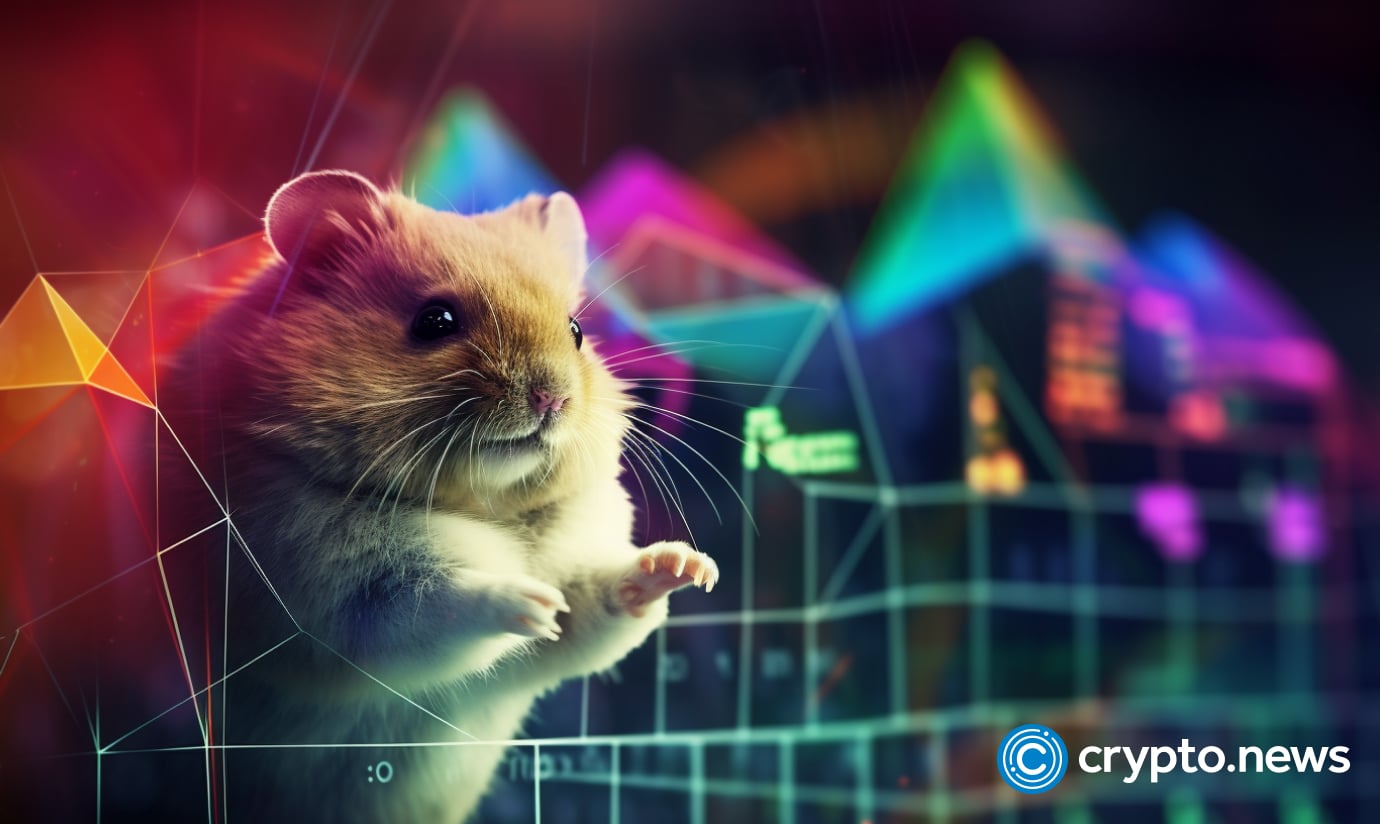

Did Hamster Kombat’s viral rise lead to its own downfall? How did 260 million players vanish in months, leaving the game a shadow of its former self?
From boom to dust
Hamster Kombat (HMSTR), a once-celebrated tap-to-earn game on Telegram, seemed destined for blockchain gaming fame, amassing a jaw-dropping 300 million users within months of its launch in March 2024.
But in a surprising twist, this viral sensation has seen an 86% nosedive in active users, dropping to just 41 million by November 2024 and facing one of the most dramatic declines in crypto gaming history.
.@hamster_kombat loses nearly 260 million players in just three months
Hamster Kombat, the tap-to-earn Telegram game that boasted a massive 300-million-strong user base back in August, has reportedly shed 259 million players.
The game’s active monthly player count currently… pic.twitter.com/vVfwhbI4E6
— ICO Drops (@ICODrops) November 4, 2024
The game’s token, HMSTR, has also plummeted in value by over 76%, sliding from its September high of $0.01004 to just $0.0024 as of Nov. 5, casting doubts over the project’s stability.
Behind this exodus lie a series of interconnected setbacks: delayed airdrops, poor user experience, government criticisms, and controversial player bans.
Could the game’s ambitious goals have been the very seeds of its undoing? Let’s delve into the numbers, the strategies, and the backlash to find out what led to Hamster Kombat’s colossal fall from grace.
The rise and promise of Hamster Kombat
Hamster Kombat launched with an ambitious promise: to make blockchain gaming accessible to everyone. A big part of the game’s appeal lies in its simplicity. No need for gaming consoles, advanced computers, or complex controls — players simply tapped, and in return, they earned.
Even Telegram’s CEO, Pavel Durov, hailed it as “the fastest-growing digital service in the world,” citing its potential to redefine how people interacted with blockchain technology.
People from all over the world were suddenly part of this booming virtual ecosystem, where tapping became the new mining, and the tokens they collected had real value attached.
But the game itself couldn’t keep players engaged. The initial excitement over the tap-to-earn model quickly faded as players found the gameplay repetitive and shallow.
With no fresh challenges, Hamster Kombat began to lose its appeal, leaving users with little reason to return, especially as the HMSTR token kept losing value.
The AI-generated graphics, which initially seemed quirky, were also criticized for feeling cheap and uninspired, adding to the perception that Hamster Kombat was more of a cash grab than a well-crafted gaming experience.
The simplicity that first drew users in became a source of frustration, and the game’s high hopes for sustainability faced challenges that even a massive user base couldn’t fix.
The airdrop disappointment and the backlash of bans
One of Hamster Kombat’s most eagerly awaited events was its token airdrop in late September, intended as a reward for player loyalty and engagement.
With nearly 129 million players eligible to claim HMSTR tokens, expectations ran high. But what was meant to be a celebratory event ended up driving players away in droves.
The airdrop left many users frustrated, not just because of delays but due to the surprisingly low value of their rewards.
Some players who had spent hours grinding the game found their earnings amounted to just $1 to $10 — a fraction of what they’d hoped for, leading some to label the airdrop as “dust.”
To make matters worse, the rollout of the airdrop was marred by delays and technical glitches. Originally promised as a straightforward distribution, the airdrop faced several postponements, testing players’ patience.
By the time it finally happened, the discontent among the user base was palpable. Many players took to social media to vent their frustrations, some claiming they felt deceived by what they saw as broken promises.
This backlash severely damaged the game’s reputation, transforming the airdrop from an incentive to a point of contention.
The controversy didn’t end there. Hamster Kombat introduced a new anti-cheat system alongside the airdrop, aiming to curb fraudulent activities.
While intended to protect genuine players, this system ended up banning around 2.3 million accounts and confiscating approximately 6.8 billion HMSTR tokens. Many players felt blindsided by these sudden restrictions, as even legitimate users were caught in the dragnet.
Some felt that the sweeping bans were too harsh, and the confiscations only added to the resentment, leaving a large chunk of the player base feeling alienated and mistreated.
The fallout was swift. The airdrop disappointment, combined with the massive bans, fueled a wave of user departures. By early November, Hamster Kombat’s once-formidable user base had dwindled to just 41 million monthly active players, a fraction of its 300 million peak.
Government scrutiny and the ripple effect of public doubt
Hamster Kombat’s rapid rise wasn’t just on players’ radar — it also attracted the attention of governments, and not always in a positive way.
In some regions, officials expressed concern over the game’s influence, viewing it as more than just a harmless pastime. As its user base swelled, so did the scrutiny, with some authorities labeling the game as a “disruptive force” in their societies.
In Iran, the backlash was particularly strong. The game caught the attention of the country’s military officials, who were concerned that Hamster Kombat was drawing attention away from political matters.
One Iranian military deputy chief went so far as to call it a “soft tool” being used by the West to distract citizens from national priorities and weaken the country’s religious governance, positioning it as a digital disruptor with intentions beyond simple entertainment.
The situation was similar in Russia, where the chairman of the State Duma Committee took an even harsher stance, branding Hamster Kombat as a “scam”, and called for an outright ban.
The developers of Hamster Kombat have also had to address their connection with Gotbit, a crypto market maker now under investigation for fraud in the U.S.
As the authorities filed charges against Gotbit for market manipulation, Hamster Kombat publicly distanced itself from the company.
Dear CEOs,
We are committed to ensuring transparency within the Hamster Ecosystem.
In light of recent news regarding Gotbit, we want to clarify that Hamster Kombat has never worked with Gotbit as a market maker.
— Hamster Kombat (@hamster_kombat) October 12, 2024
Despite these efforts, users have continued to question the stability of the HMSTR token, which has already experienced a stark drop in value.
What’s next for HMSTR?
The sharp downturn in Hamster Kombat’s player base and token price has left many in the crypto community asking: is this just a stumble, or has the game reached a point of no return?
One of the most pressing concerns is a breakdown in trust, with disappointed users feeling that Hamster Kombat has “betrayed the trust of its community.”
Enough is Enough Hamster Kombat
Hamster Kombat has betrayed the trust of its community through deceptive practices, prioritizing influencers over genuine users. It’s time to hold them accountable and demand justice.
pic.twitter.com/nBaGHRPYQz
— Caleb (@Canny5b23n) November 2, 2024
The backlash stems from a perception that the game prioritized influencer partnerships and flashy marketing over a genuinely user-focused experience.
Many early adopters, who initially hoped for long-term rewards, are now disillusioned by broken promises, delayed airdrops, and the steady devaluation of the token.
One disappointed player noted they left after the first season, saying they had “so much hope” for the game but ultimately felt let down by the experience.
I personally left the game after the disappointed me in the first season, i had so much hope but they made it short
— Millie (@origanalybohay) November 5, 2024
Another major worry has been the ongoing decline in the value of the HMSTR token. As one observer put it, the token’s price chart is “in freefall,” with many users predicting that exchange delistings are “probably around the corner.”
This prediction isn’t baseless; projects unable to sustain interest or stabilize token value often find themselves sidelined by major exchanges due to low trading volume and high volatility.
For Hamster Kombat, rebuilding user trust and stabilizing the HMSTR token will demand not only operational adjustments but also clear communication. This includes rethinking gameplay mechanics, enhancing reward quality, and building genuine engagement with the community.
The broader takeaway here is that crypto games must go beyond promises to deliver real value if they want to survive the increasingly skeptical eyes of their audiences.
Source link

Monero’s XMR Rockets 40% as XRP Leads Crypto Majors Gains

The 5 top crypto loan platforms of 2025

XRP Price Shows Strength — Breakout Above Key Levels Possible?

Expert Reveals Why The Ethereum-To-Bitcoin Ratio Is Falling

Analyst Says Solana-Based Memecoin Going Much Higher, Sees PENGU Facing ‘True Test’ After April Surge

Nike sued for $5 million over its shutdown of NFT platform RTFKT

Biological Age vs. Chronological Age: Redefining Age in the Digital Era

TRUMP whale regrets sale, pays double to buy back meme coins

Stripe Tests New Stablecoin Project as $3.7T Market Looms

Falling Wedge Pattern Confirms $264 target
Dogecoin Confirms Daily Trend Reversal With Breakout, Retest, And New Uptrend

Ethereum community members propose new fee structure for the app layer

Crypto Investors Sue Nike, Accuse Apparel Giant of Rug Pull After Abrupt Closure of Metaverse Business: Report

Top cryptocurrencies to watch: Pi Network, XRP, Sui

This Week in Crypto Games: Ubisoft’s ‘Might & Magic’, ‘Peaky Blinders’ in Development

Arthur Hayes, Murad’s Prediction For Meme Coins, AI & DeFi Coins For 2025

Expert Sees Bitcoin Dipping To $50K While Bullish Signs Persist

3 Voting Polls Show Why Ripple’s XRP Price Could Hit $10 Soon

Aptos Leverages Chainlink To Enhance Scalability and Data Access

Bitcoin Could Rally to $80,000 on the Eve of US Elections

Crypto’s Big Trump Gamble Is Risky

Institutional Investors Go All In on Crypto as 57% Plan to Boost Allocations as Bull Run Heats Up, Sygnum Survey Reveals

The Future of Bitcoin: Scaling, Institutional Adoption, and Strategic Reserves with Rich Rines

Sonic Now ‘Golden Standard’ of Layer-2s After Scaling Transactions to 16,000+ per Second, Says Andre Cronje

Ripple-SEC Case Ends, But These 3 Rivals Could Jump 500x

Has The Bitcoin Price Already Peaked?

A16z-backed Espresso announces mainnet launch of core product

Xmas Altcoin Rally Insights by BNM Agent I

Blockchain groups challenge new broker reporting rule

I’m Grateful for Trump’s Embrace of Bitcoin
Trending

 24/7 Cryptocurrency News6 months ago
24/7 Cryptocurrency News6 months agoArthur Hayes, Murad’s Prediction For Meme Coins, AI & DeFi Coins For 2025

 Bitcoin3 months ago
Bitcoin3 months agoExpert Sees Bitcoin Dipping To $50K While Bullish Signs Persist
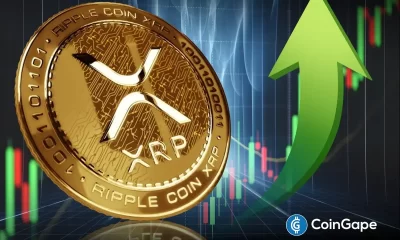
 Ripple Price1 month ago
Ripple Price1 month ago3 Voting Polls Show Why Ripple’s XRP Price Could Hit $10 Soon
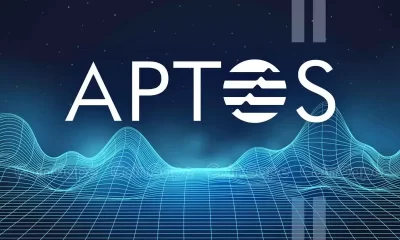
 24/7 Cryptocurrency News4 months ago
24/7 Cryptocurrency News4 months agoAptos Leverages Chainlink To Enhance Scalability and Data Access

 Bitcoin6 months ago
Bitcoin6 months agoBitcoin Could Rally to $80,000 on the Eve of US Elections
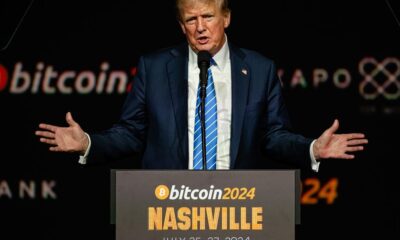
 Opinion6 months ago
Opinion6 months agoCrypto’s Big Trump Gamble Is Risky

 Bitcoin5 months ago
Bitcoin5 months agoInstitutional Investors Go All In on Crypto as 57% Plan to Boost Allocations as Bull Run Heats Up, Sygnum Survey Reveals

 Bitcoin3 months ago
Bitcoin3 months agoThe Future of Bitcoin: Scaling, Institutional Adoption, and Strategic Reserves with Rich Rines






